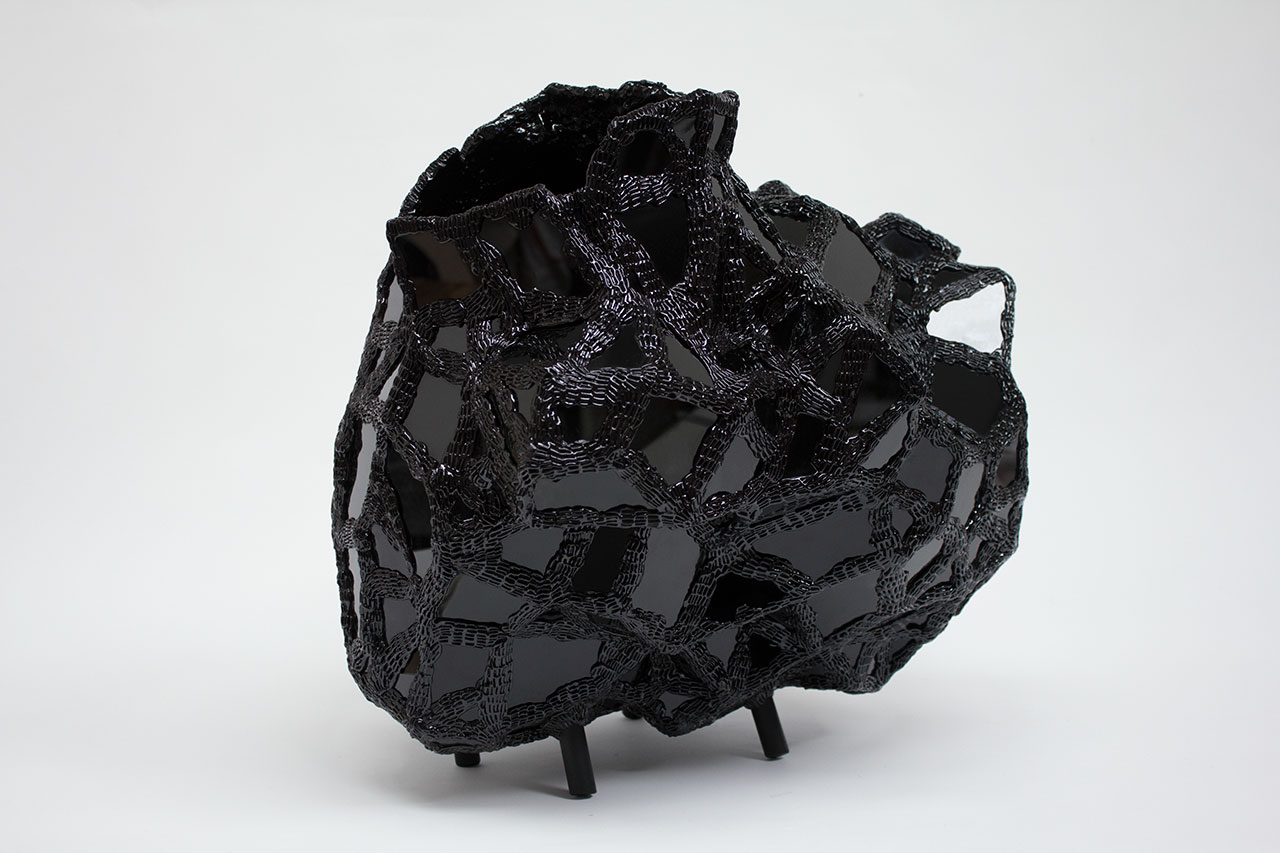
Marlène Huissoud, Of Insects and Men. Photo by Studio Immaters.
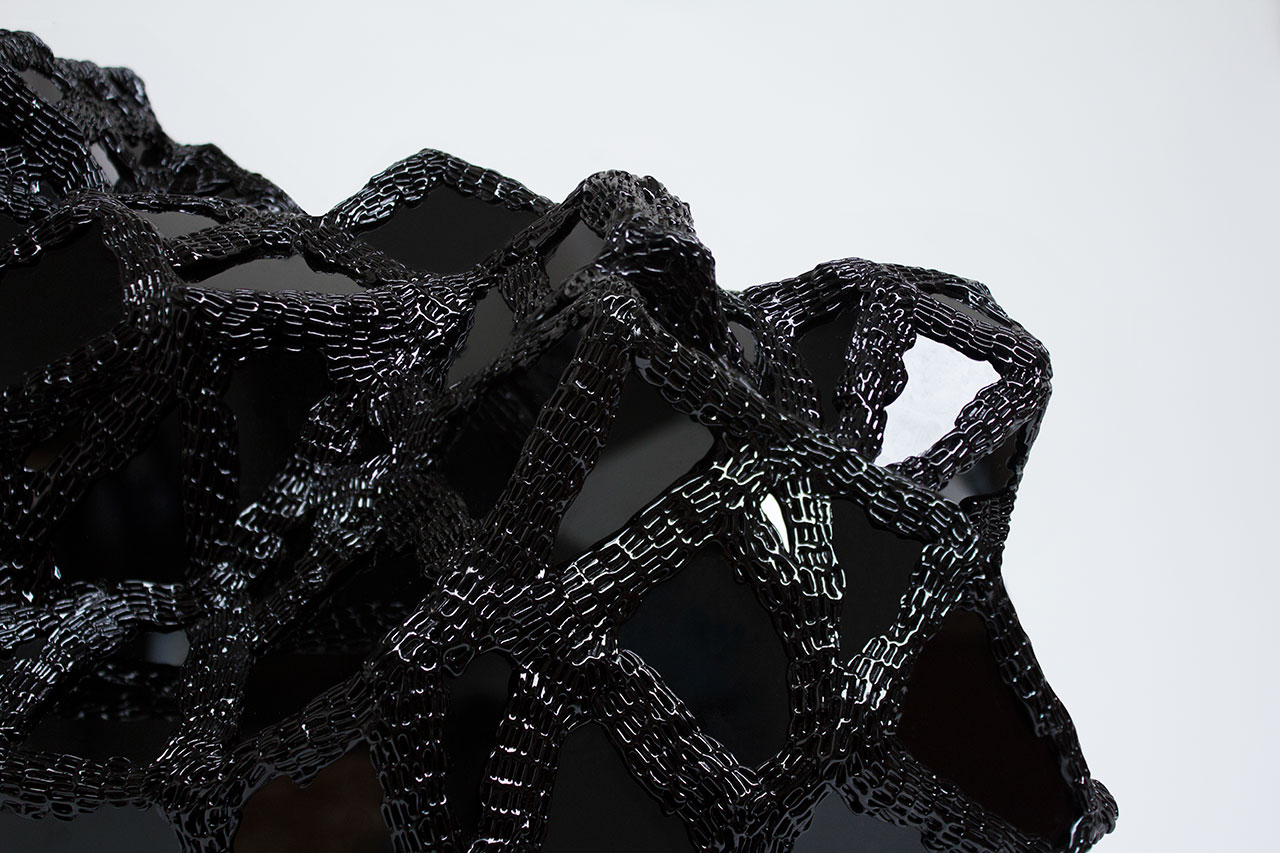
Marlène Huissoud, Of Insects and Men. Photo by Studio Immaters.
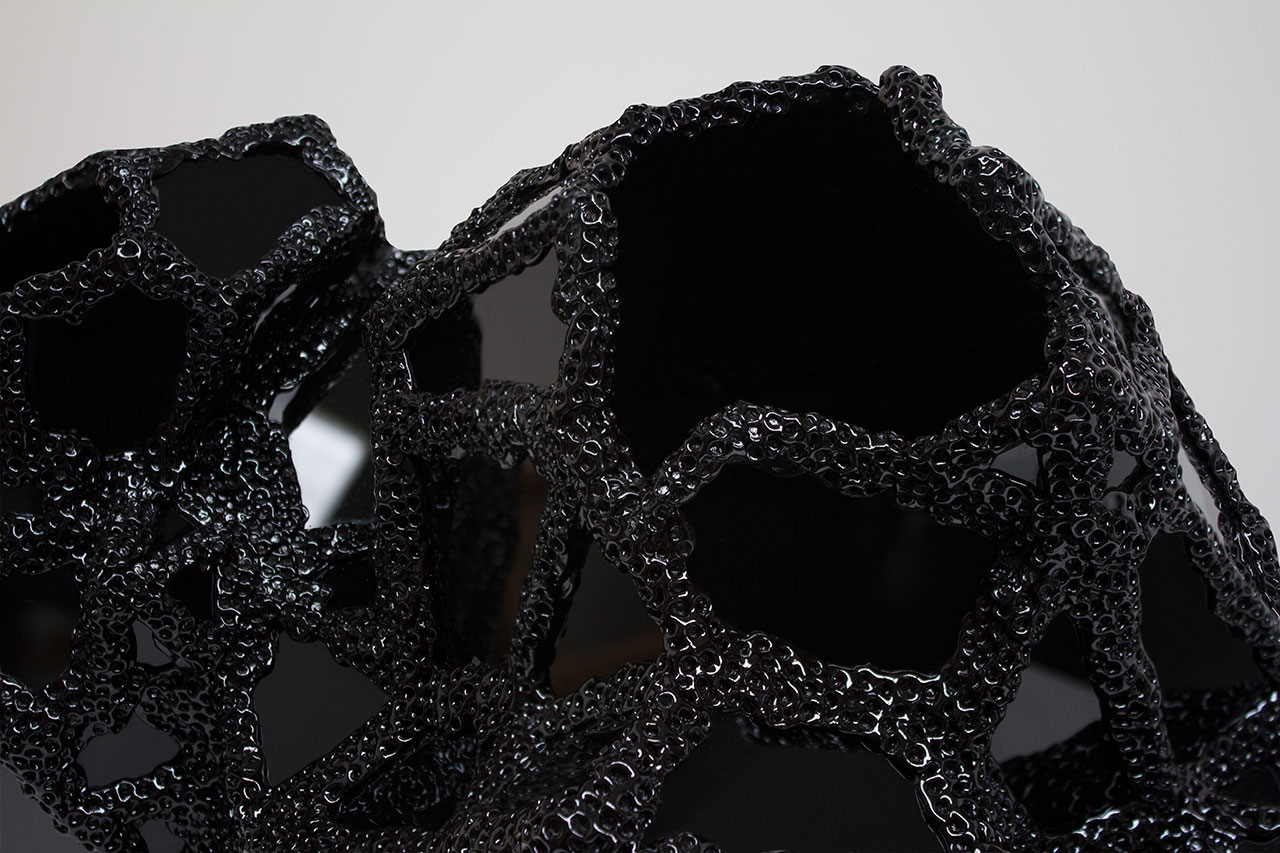
Marlène Huissoud, Of Insects and Men. Photo by Studio Immaters.
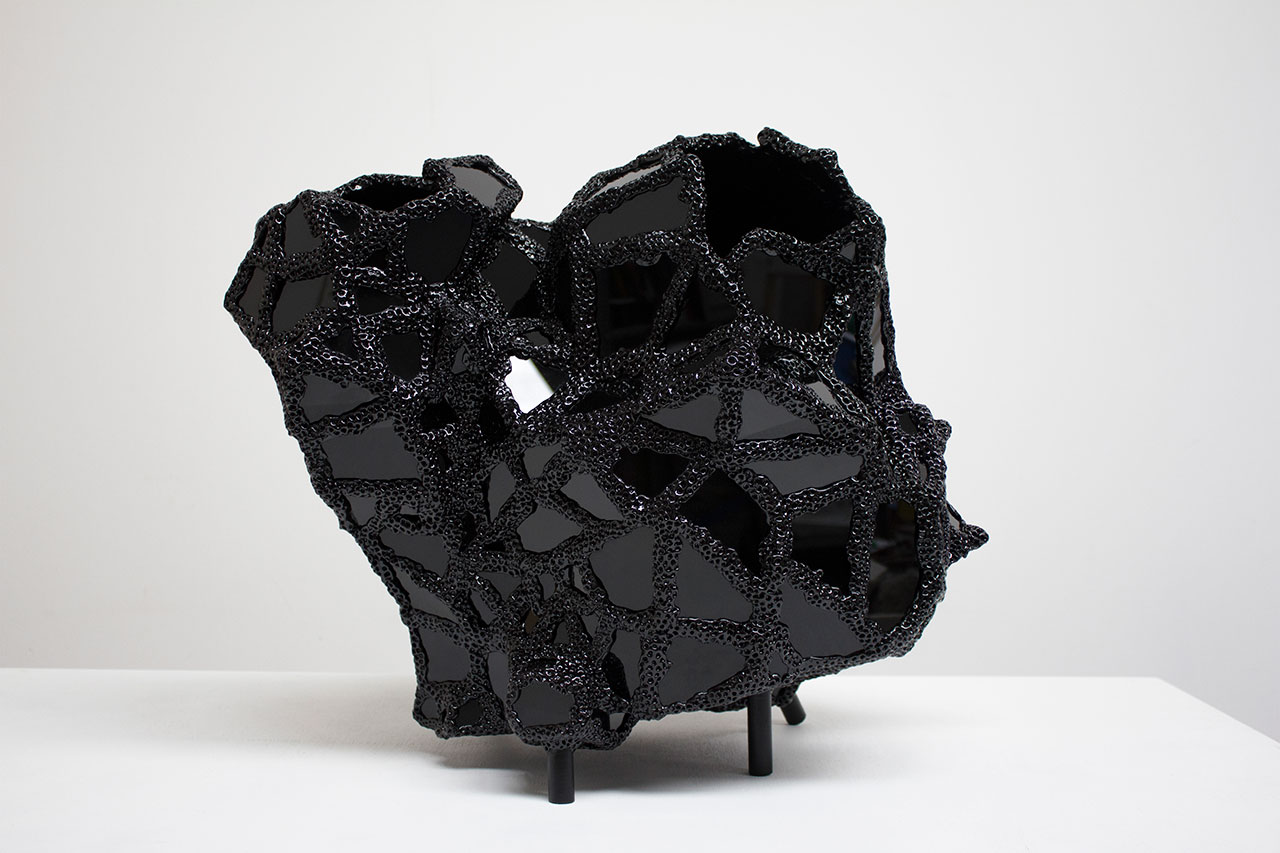
Marlène Huissoud, Of Insects and Men. Photo by Studio Immaters.
Although honey bees have been the source of inspiration for other artists in the past —as an example we'll cite Tomáš Libertíny— using natural formations such as the texture of beehives as inspiration comes from a source close to Marlene's home: her father trained as a beekeeper and currently maintains six hundred beehives in the French Alps. "When I was a kid we used to spend all our summers in a caravan [in the forests] surrounded by a variety of insects, beehives… It's definitely something which is a part of me," Marlene says. "I wanted to celebrate the heritage of my family in a new way."
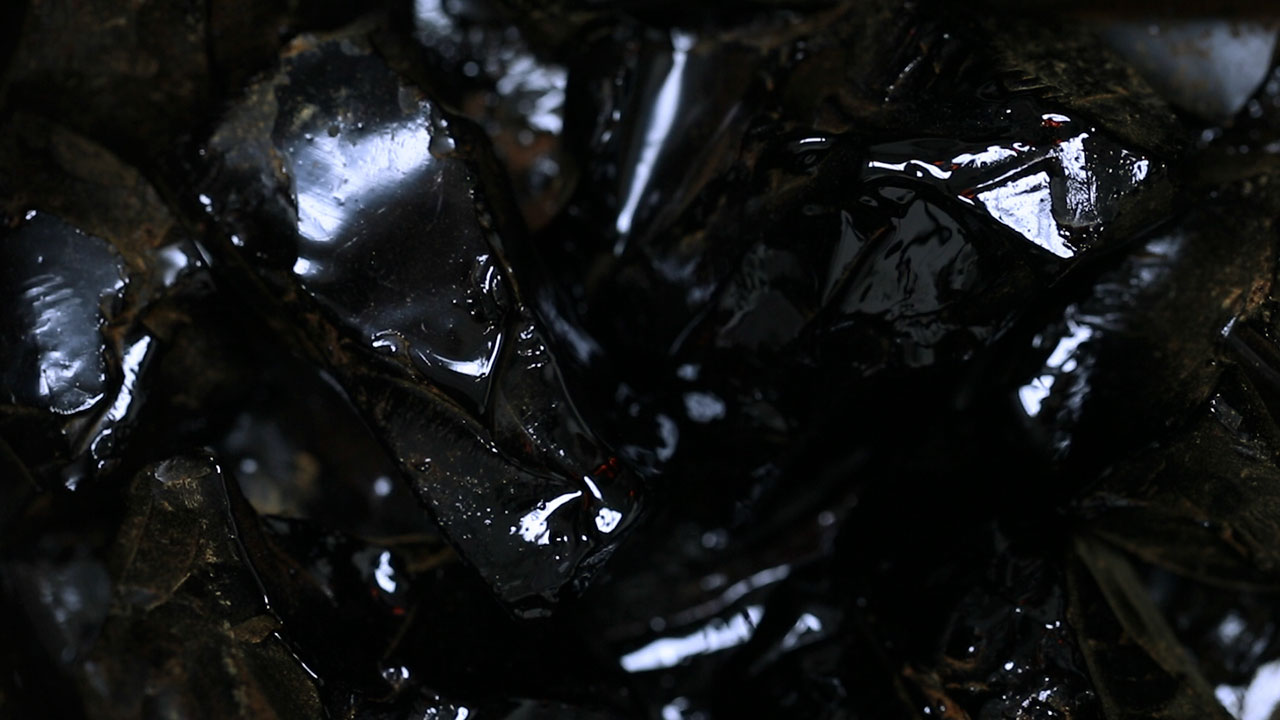
Photo © Studio Marlène Huissoud.
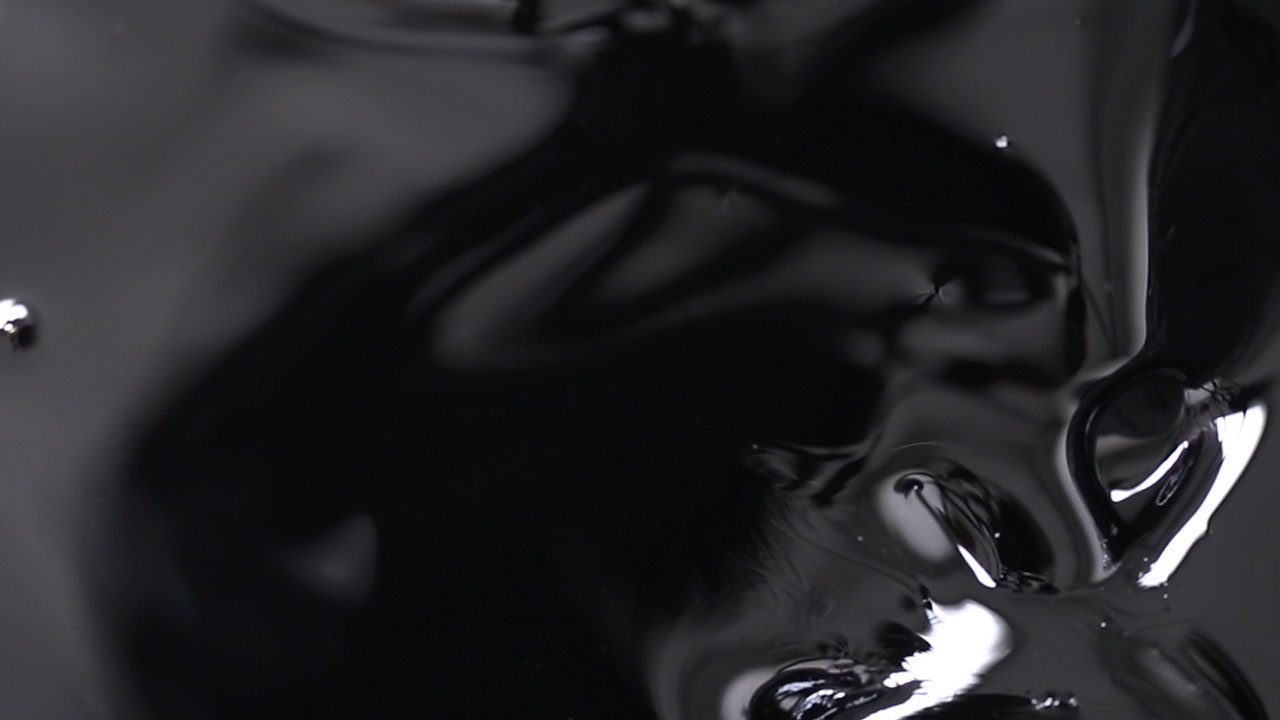
Photo © Studio Marlène Huissoud.
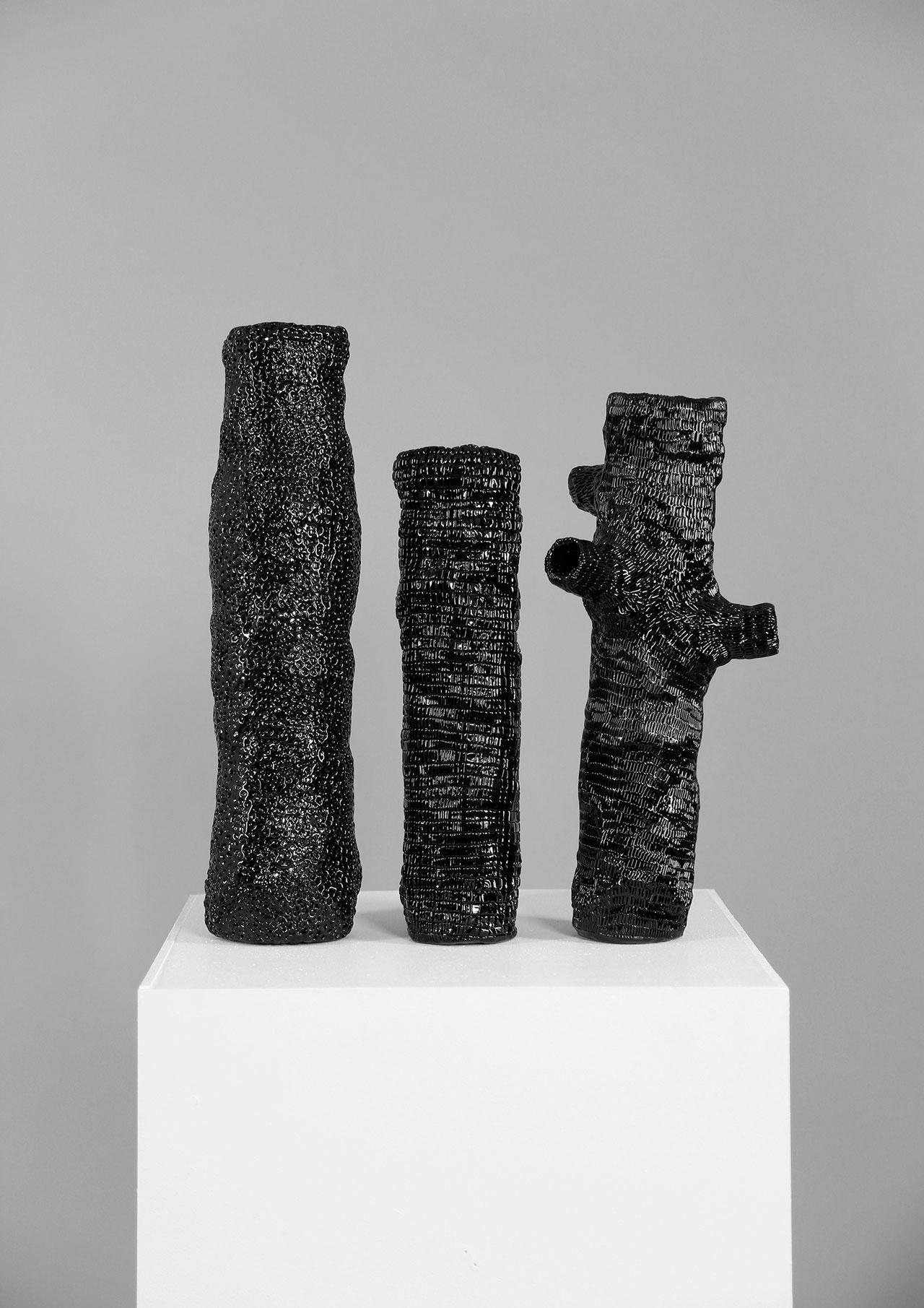
Marlène Huissoud, From Insects, Bee Vessels. Photo © Studio Marlène Huissoud.
Marlene's unique talent lies in handling the essence of these textures for creating the industrial objects of her collections such as her Bee Vase, Tree Vase and exceedingly impressive, Press Cake. The unique results look as if they were made out of glass or leather. In fact, Marlene has created "a whole palette of materials" derived from the insect world, and has spent many months studying their properties and experimenting with various techniques. Her results "wouldn't have been possible without a lot of failures and a 'crazy experimental' kitchen," Marlene says of her "research of materiality and celebration of insect beauty," as she eloquently describes it to us.
Discovering how to use traditional production techniques for these unique materials was challenging. "I teamed up with glass craftsmen and tried glass blowing techniques, Venetian techniques, engraving techniques…" After many failures they succeeded in blowing the honeybee bio resin with the same method used for glass but by adapting a specific kiln and keeping the temperature at around 120˚C, which is ten times lower than the temperature required for glass blowing. The resulting handmade items are organic in form and distinctively mesmerizing in appearance, their surfaces appearing to move and shift under an audience’s gaze as they are viewed from all sides.
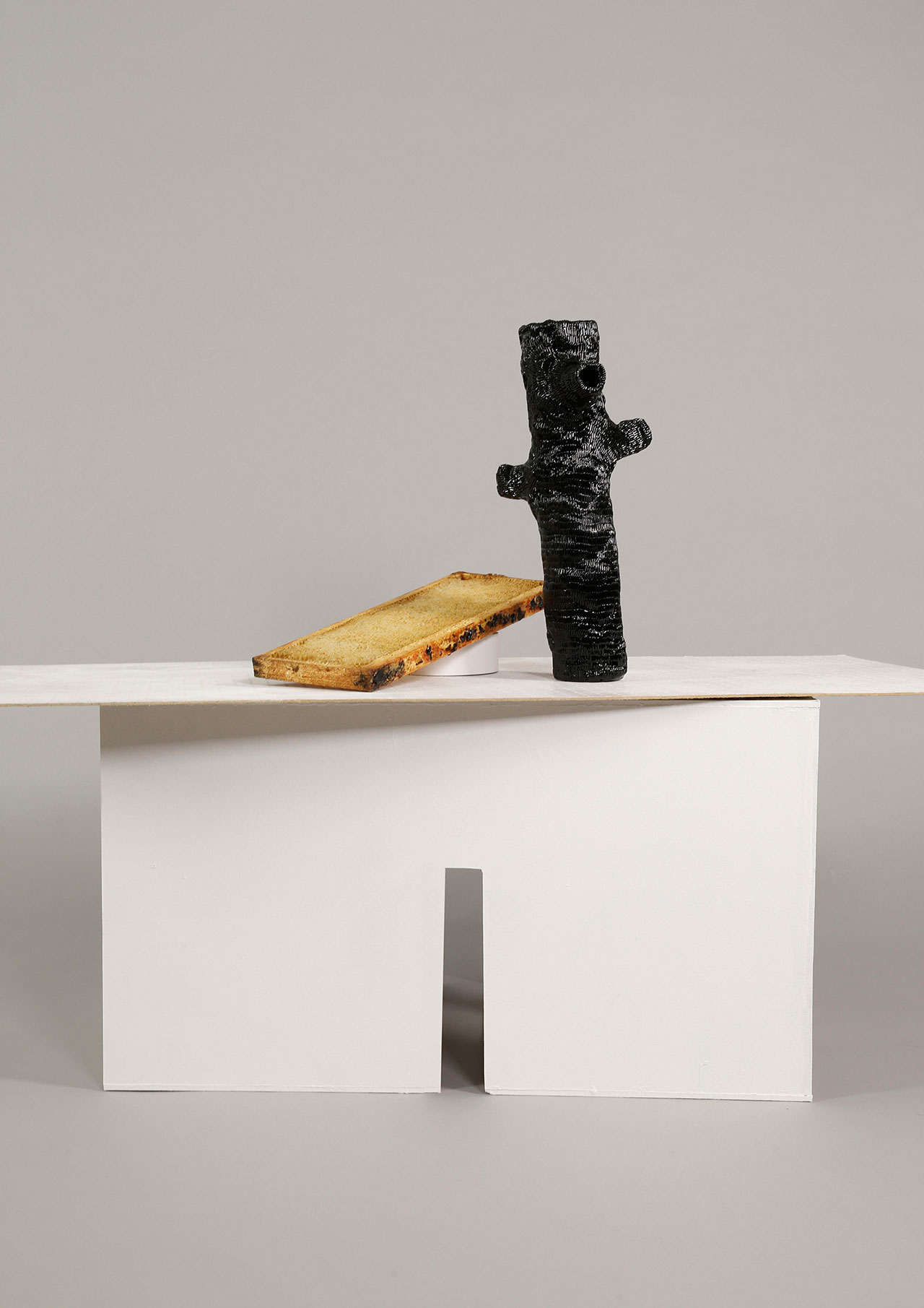
Marlène Huissoud, From Insects, Tree Vessel,
44 x 9 x 9 cm. Photo © Studio Marlène Huissoud.
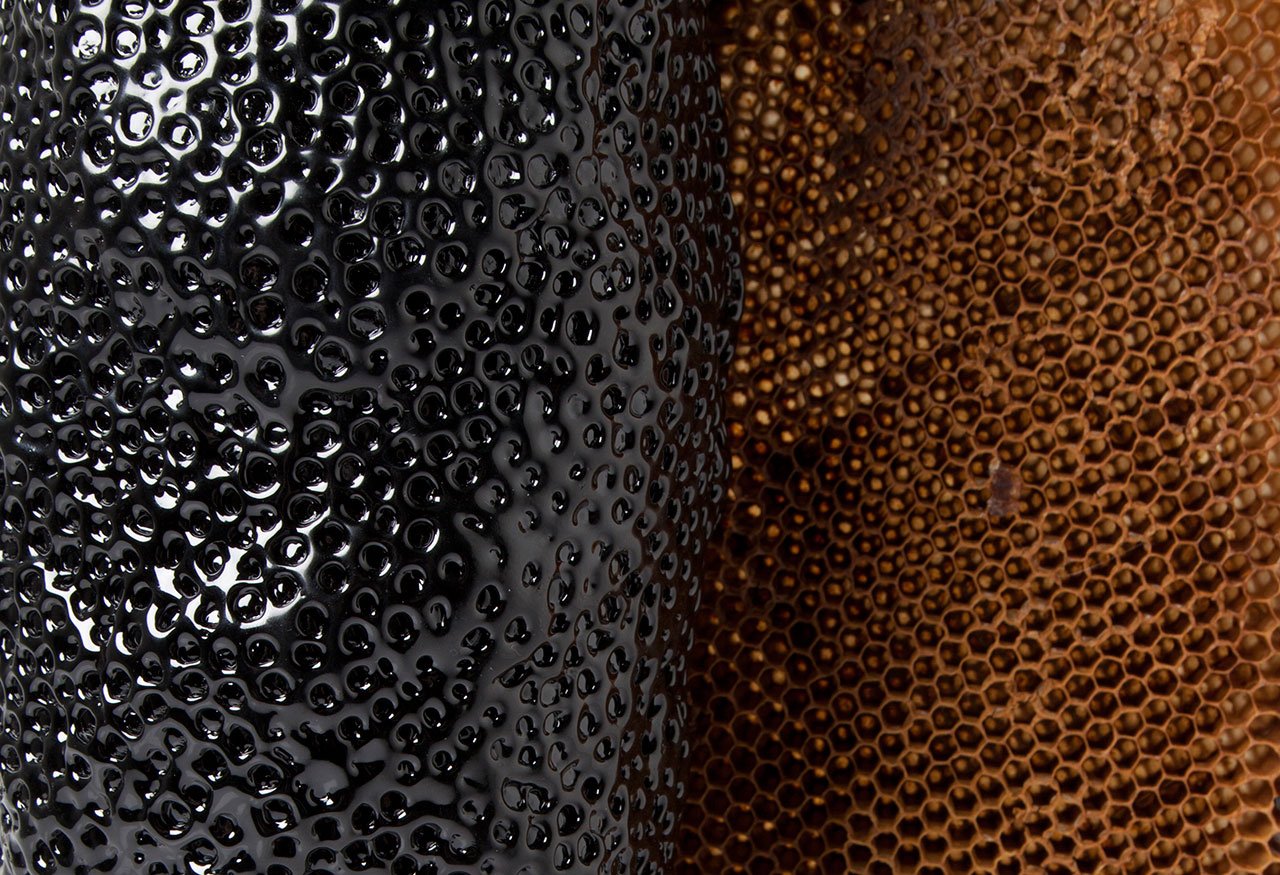
Marlène Huissoud, From Insects, samples. Photo © Studio Marlène Huissoud.
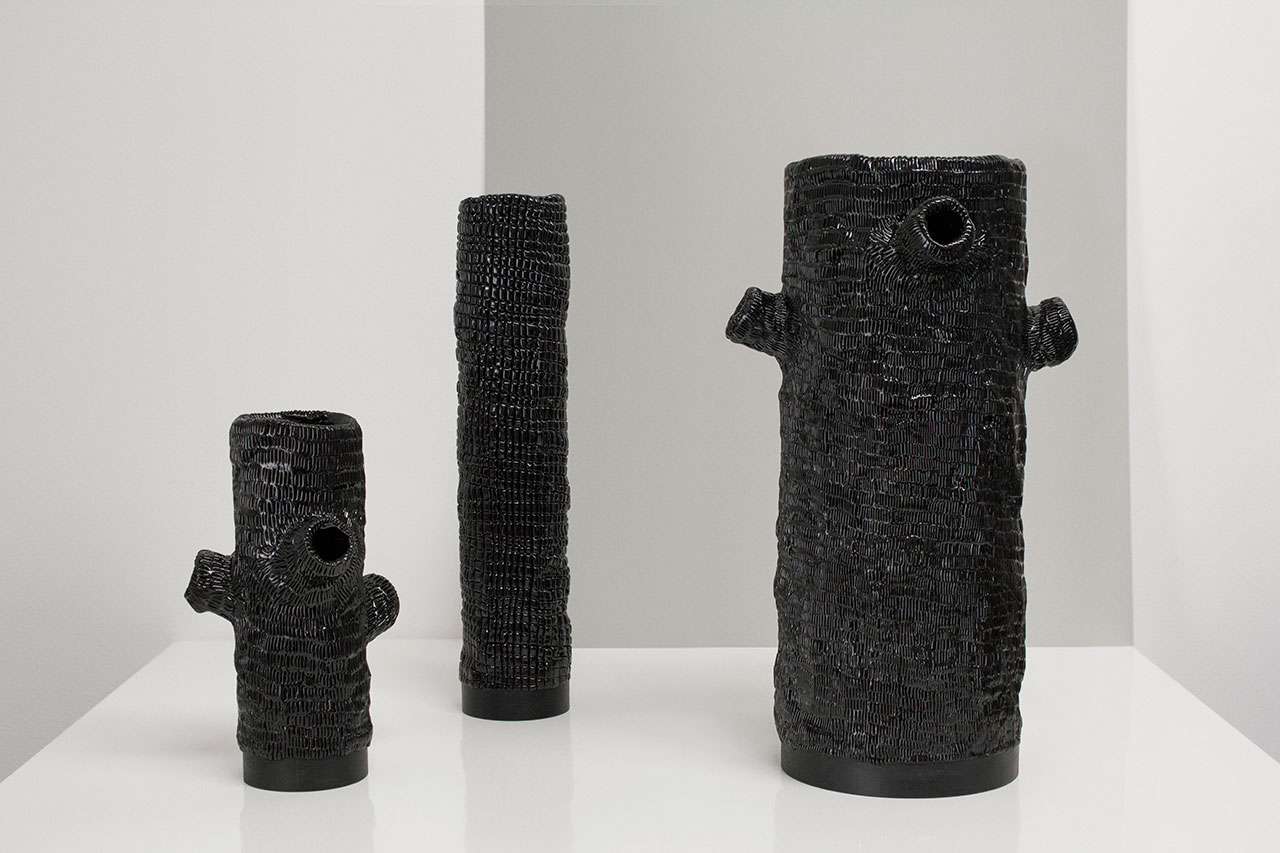
Marlène Huissoud, From Insects, Bee Vessels. Photo by Yesenia Tibault Picazo.
"I have always been very obsessed with my processes and each of the pieces has a really hand touched look, with a lot of details," she tells us. "I don't like it when things are polished and perfect. The imperfection of my hands plays a crucial role in my aesthetic and practice." Although she has assistants, it's of critical importance for Marlene to detail the pieces herself because: "Looking for material properties and new processes are key in my practice. I love to give a bit of freedom and space [to incorporate] unexpected results in my work."
Marlene also manipulates other natural materials such as the silkworm cocoons which she splits, unravels and then forms into a paper before coating with a special varnish she's concocted from propolis. The result resembles a "wooden leather" than can be utilized in furniture, surface and fashion design. And taking the nature inspired patterns into more recognizable realms are textiles printed from her pen and ink drawings. But Marlene reveals that she very rarely draws final shapes for her sculptural items. Even when a client commissions a certain piece, she stays very abstract in her initial descriptions, believing strongly in her materials and preferring not to be guided by anything in her creative process.
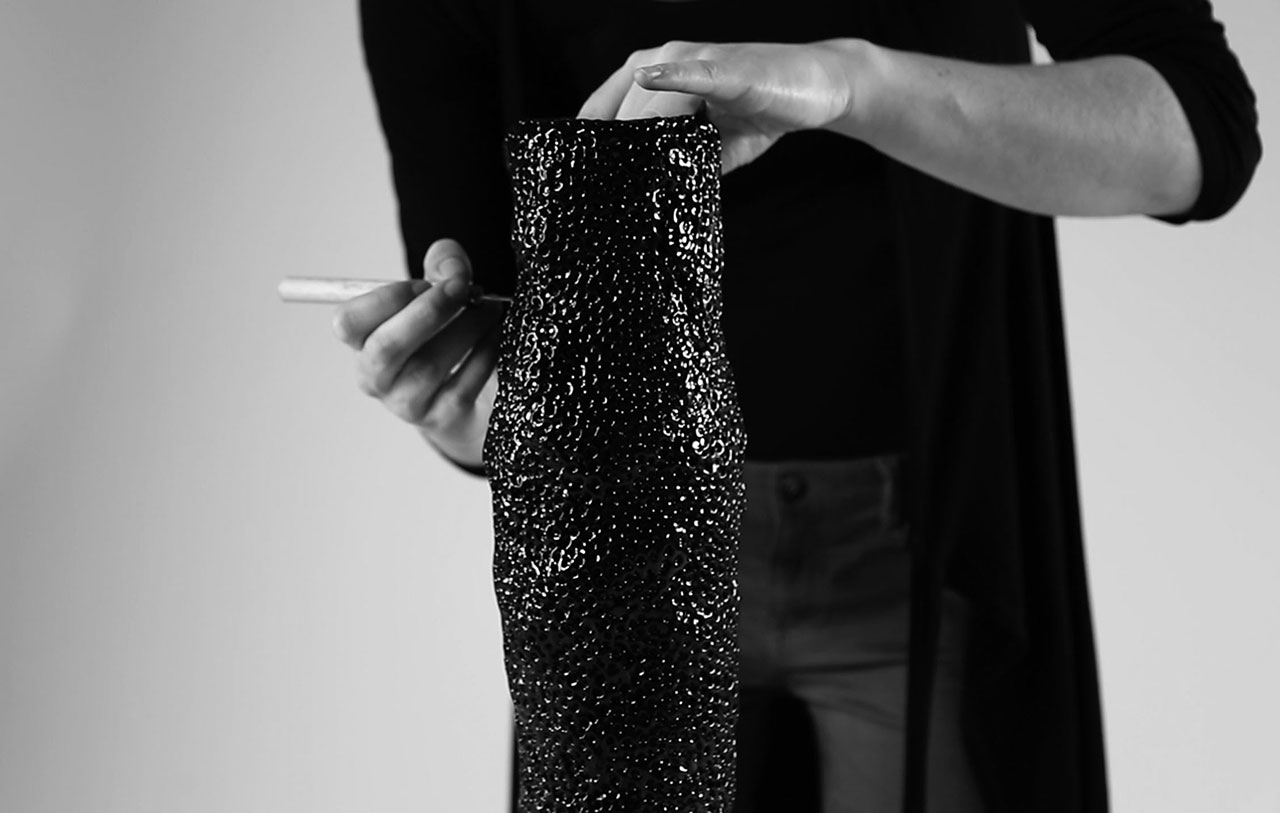
Photo © Studio Marlène Huissoud.
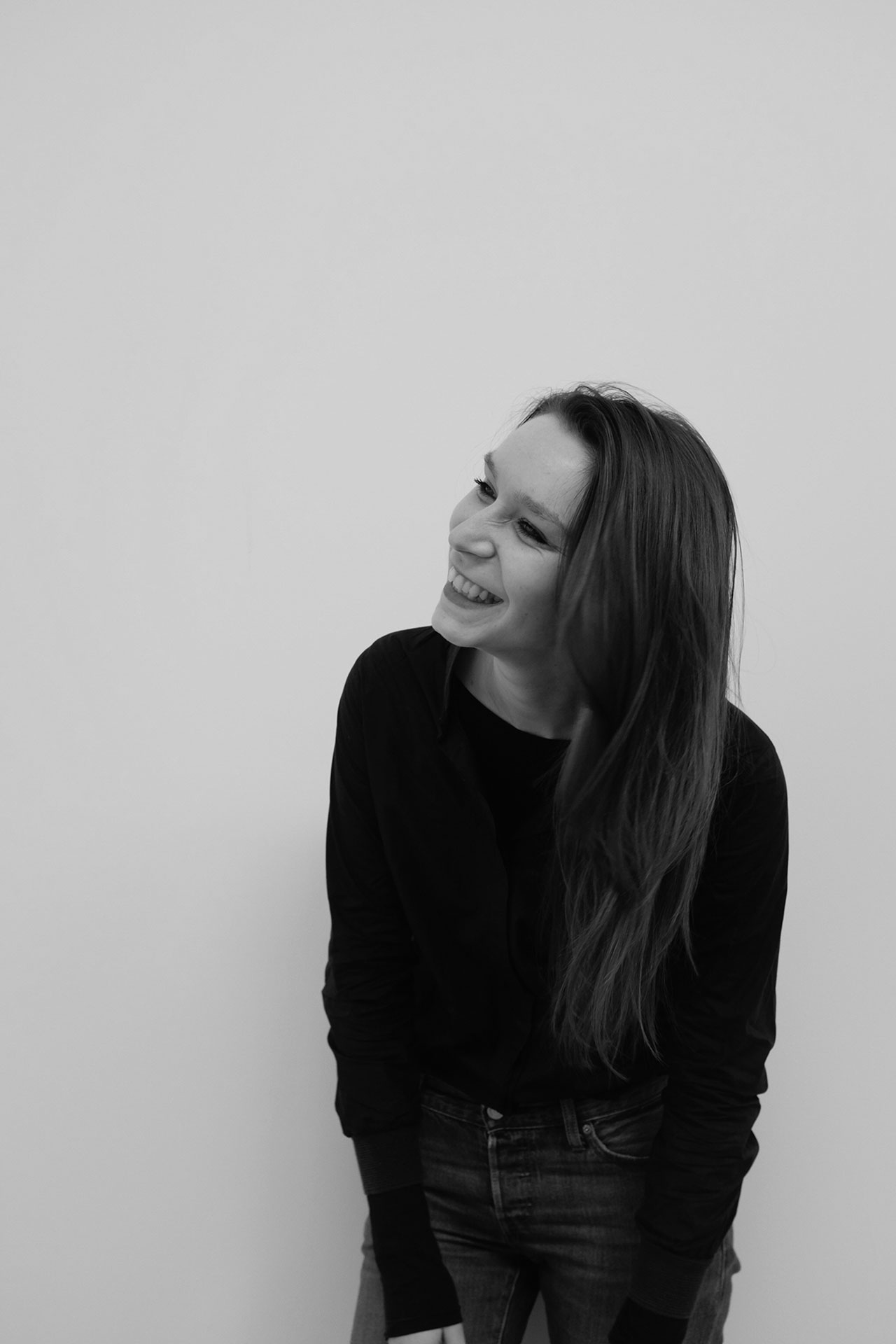
Marlène Huissoud. Photo by Yesenia Tibault Picazo.
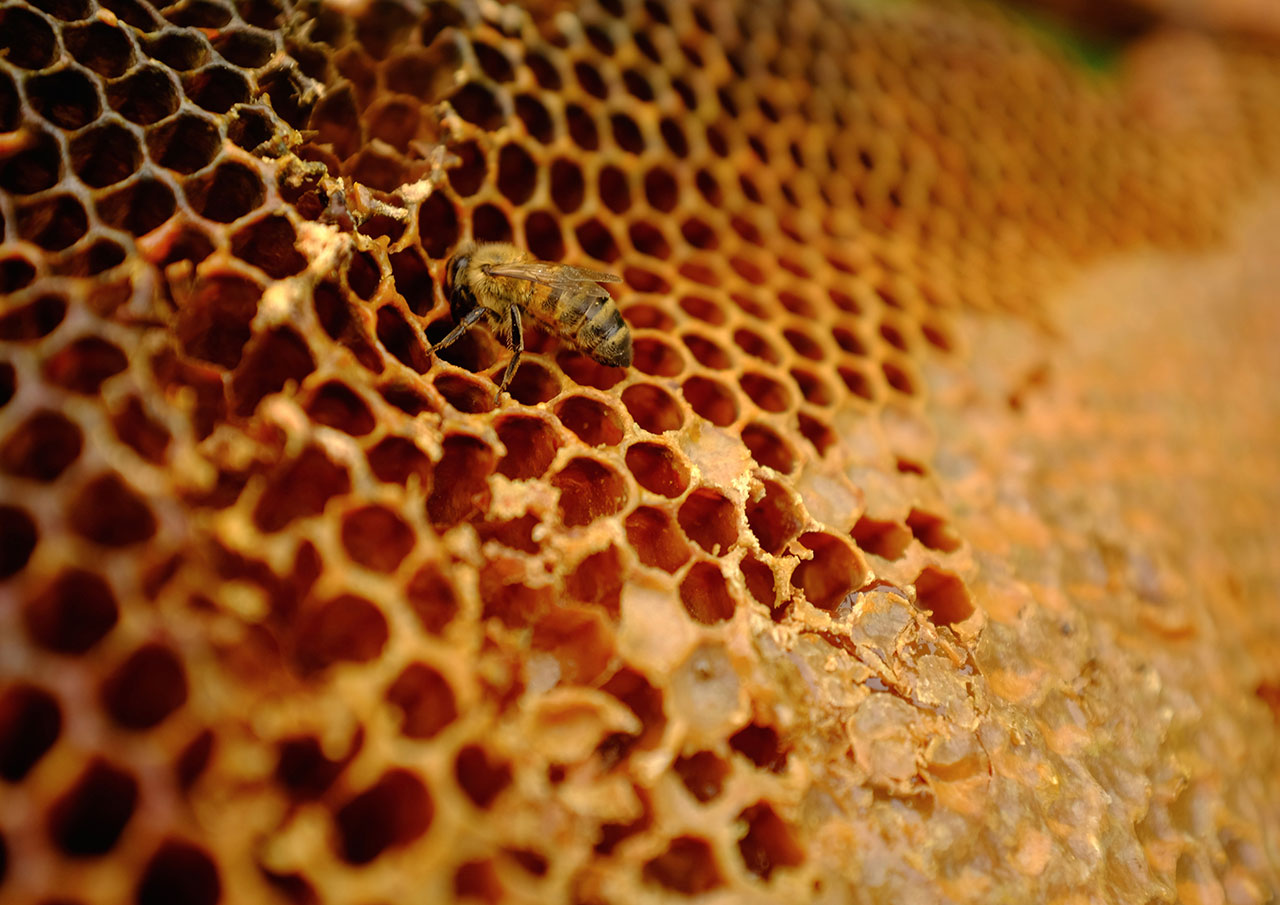
Photo © Studio Marlène Huissoud.

Marlène Huissoud, From Insects, Silk rug. Hundred of lozenges made out of the ‘Wooden Leather‘, assembled together to create a flexible surface. Photo by Yesenia Tibault Picazo.
Next on Marlene's busy agenda —who at the time of our interview has just returned to her base in London from Design Miami/Basel— is the London Design Festival and Dutch Design Week. "I would say all my projects start mainly with materiality research," she shares when she tells us that she's looking forward to getting back to her "experimental kitchen." Well we’re sure that her research will undoubtedly continue to produce noteworthy results!
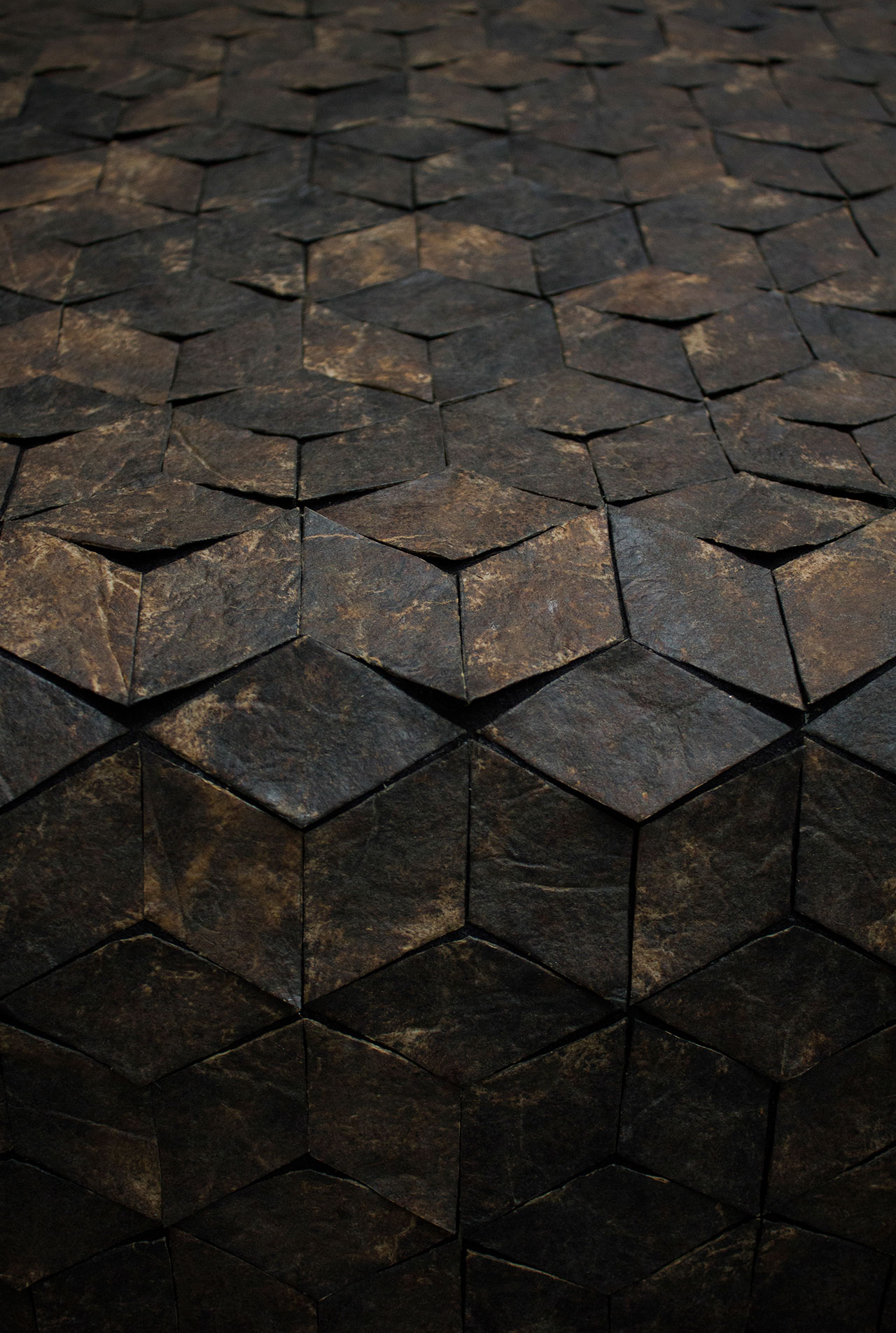
Marlène Huissoud, From Insects, Silk rug. Hundred of lozenges made out of the ‘Wooden Leather‘, assembled together to create a flexible surface. Photo by Yesenia Tibault Picazo.
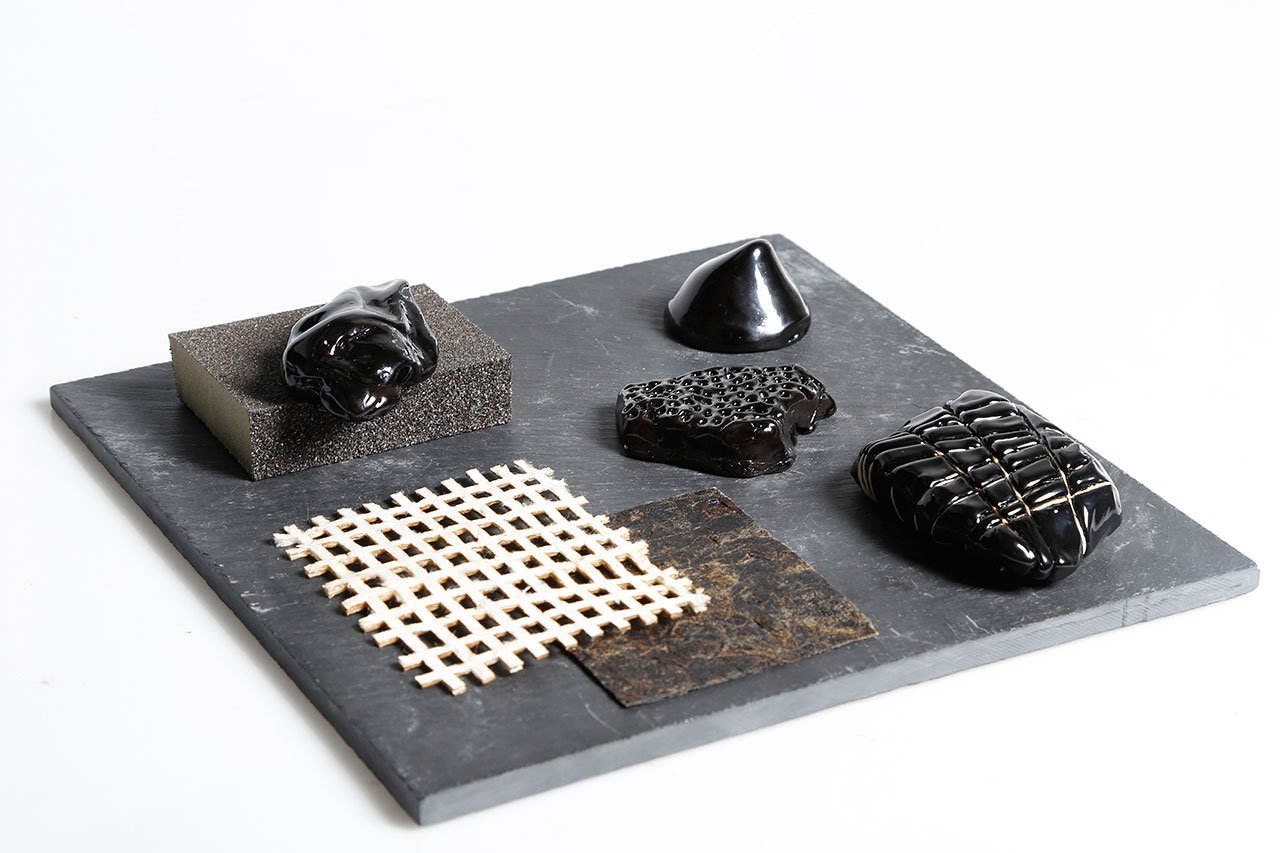
Marlène Huissoud, From Insects, samples. Photo © Studio Marlène Huissoud.
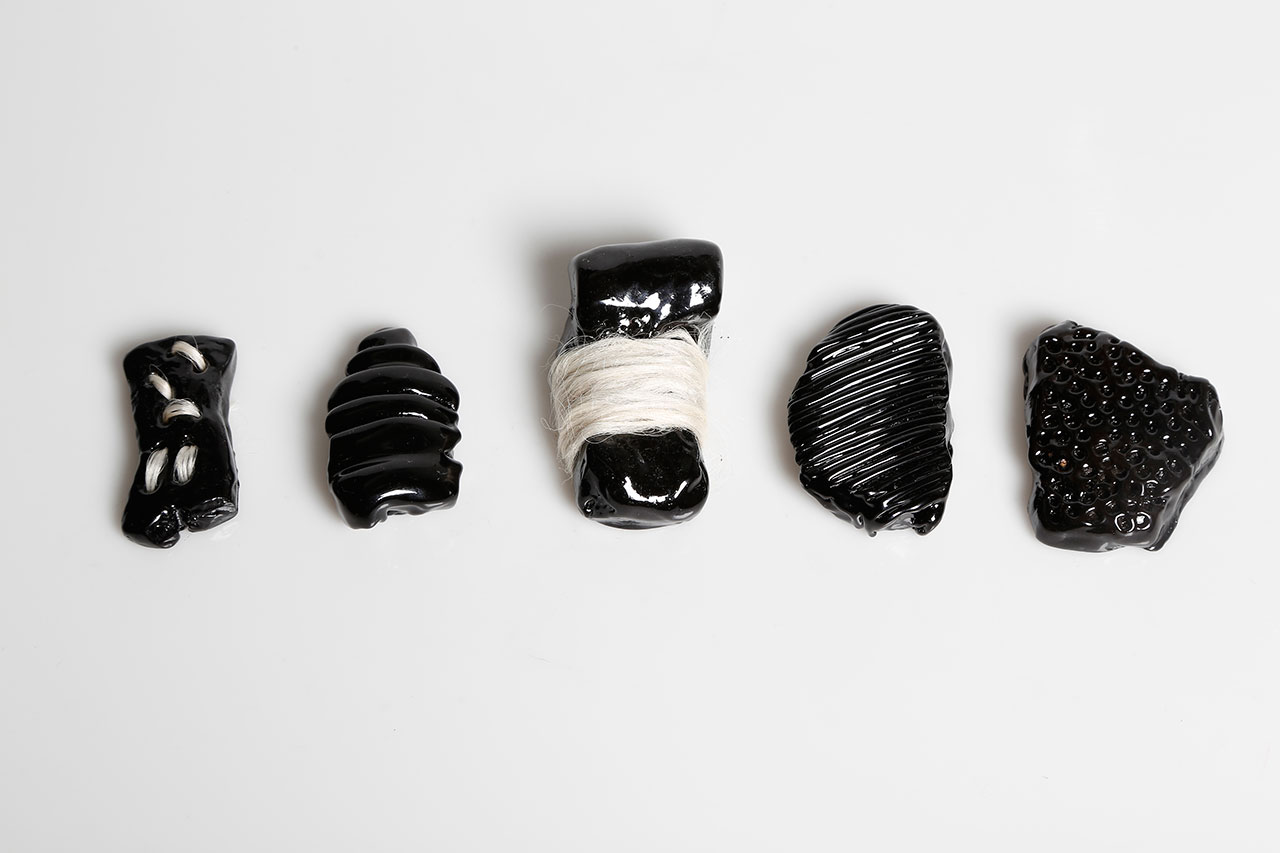
Marlène Huissoud, From Insects, samples. Photo © Studio Marlène Huissoud.
From Inscects by Studio Marlène Huissoud.
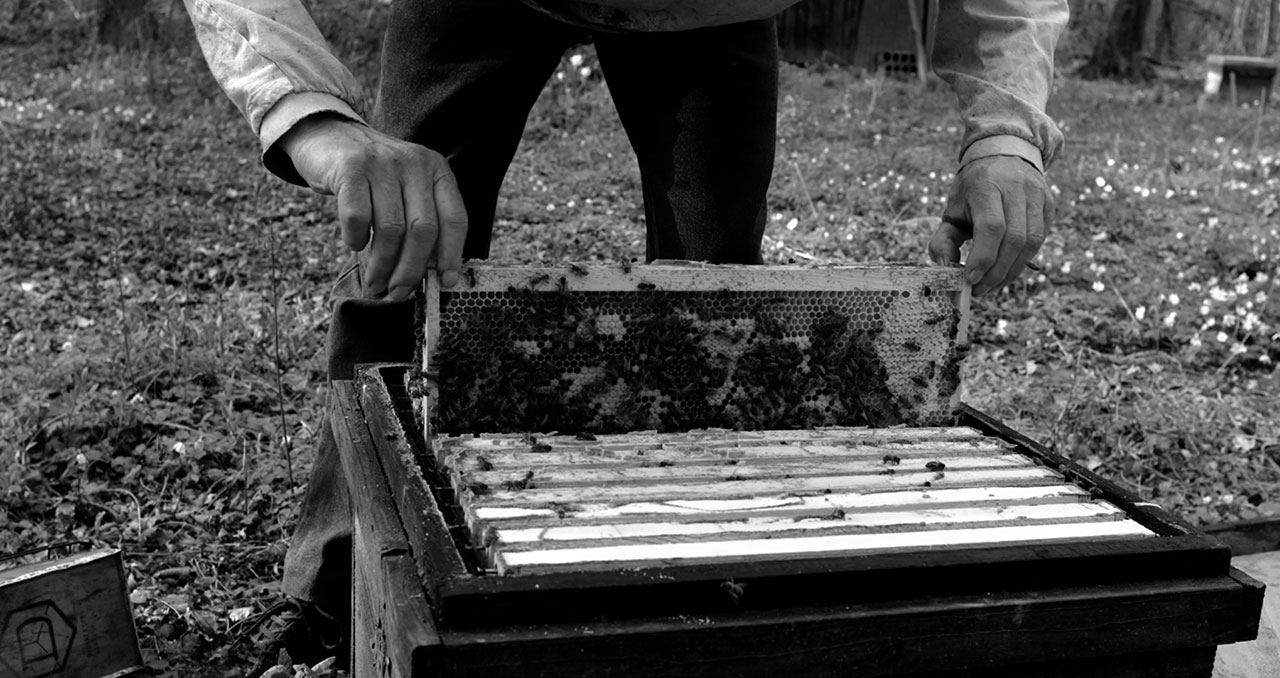
Photo © Studio Marlène Huissoud.

Photo © Studio Marlène Huissoud.
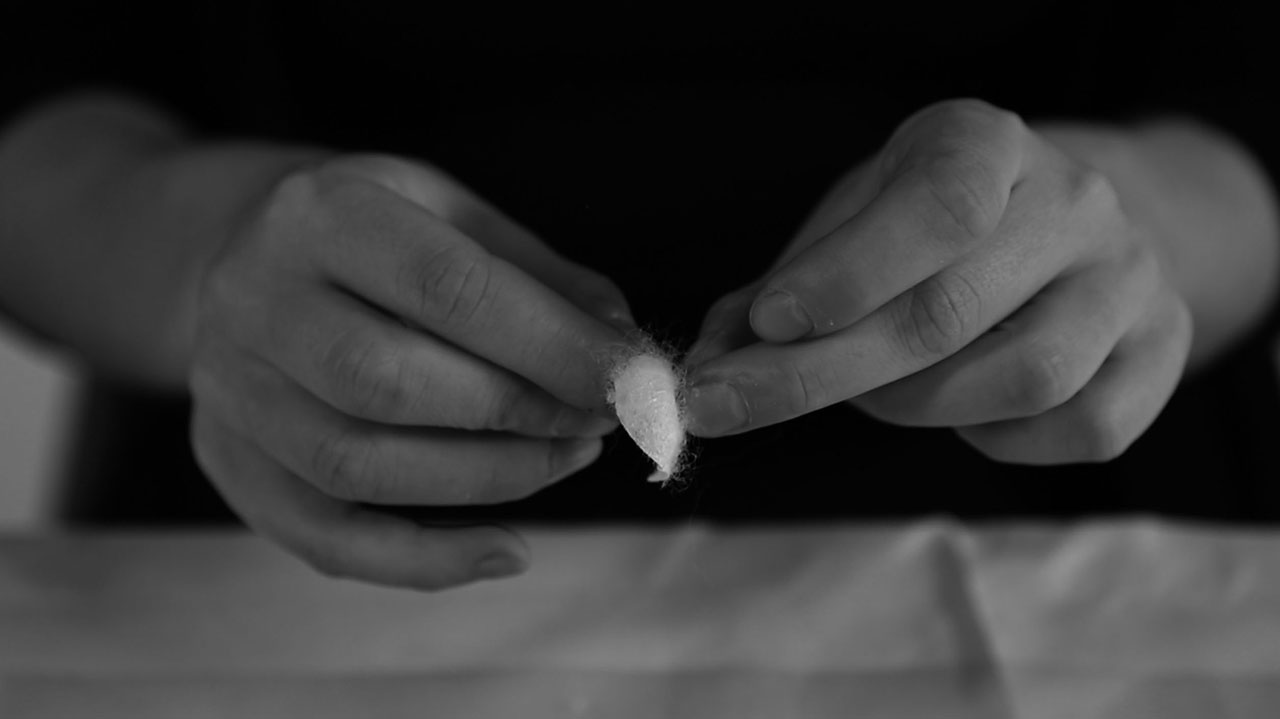
Photo © Studio Marlène Huissoud.

Photo © Studio Marlène Huissoud.
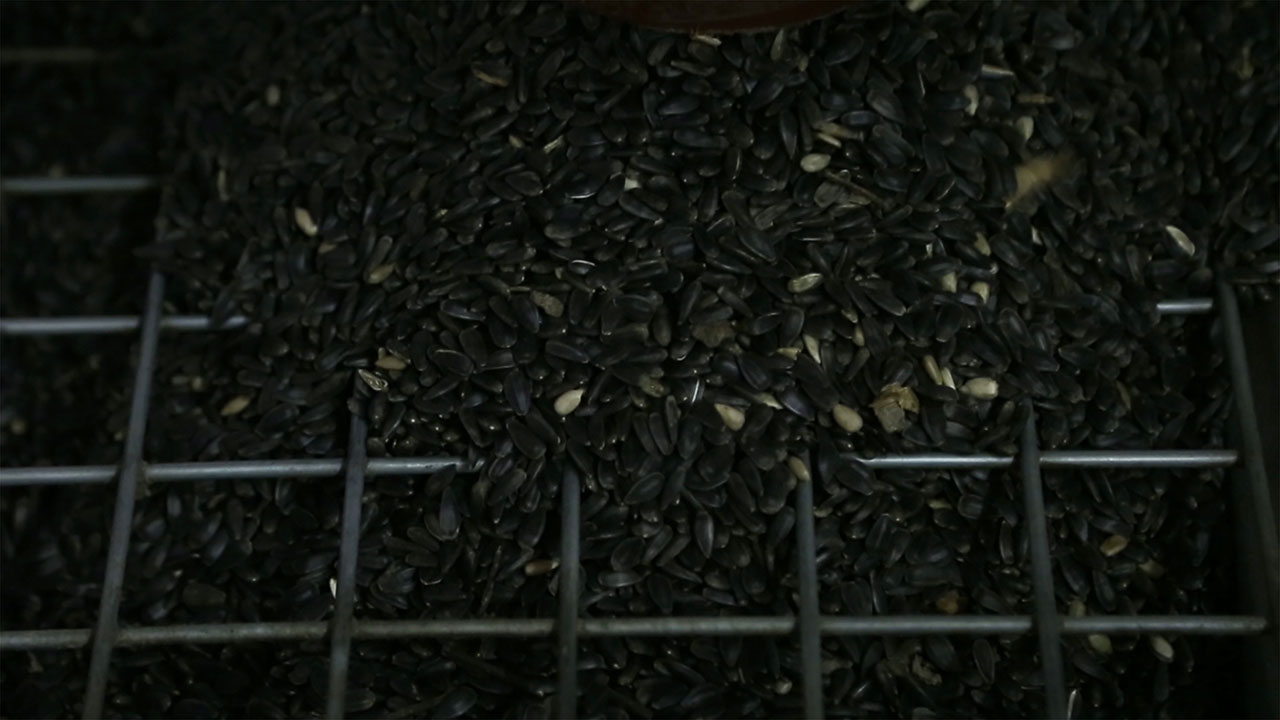
Photo © Studio Marlène Huissoud.
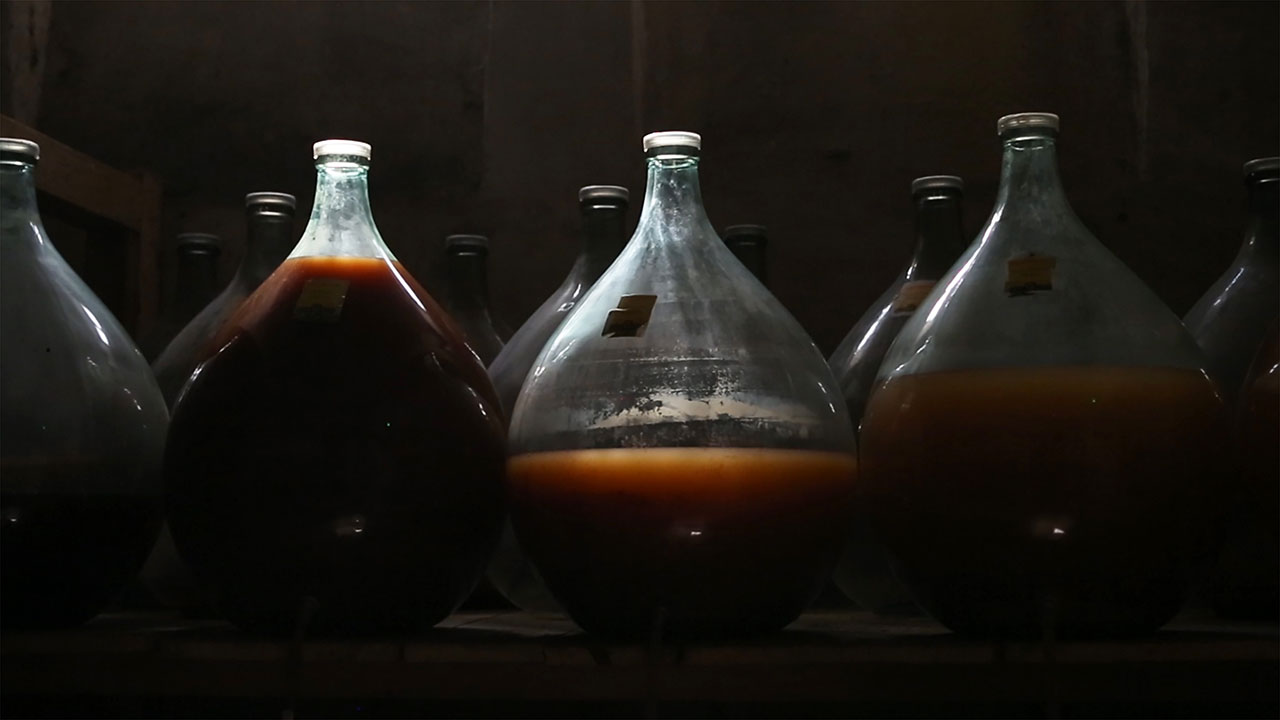
Photo © Studio Marlène Huissoud.
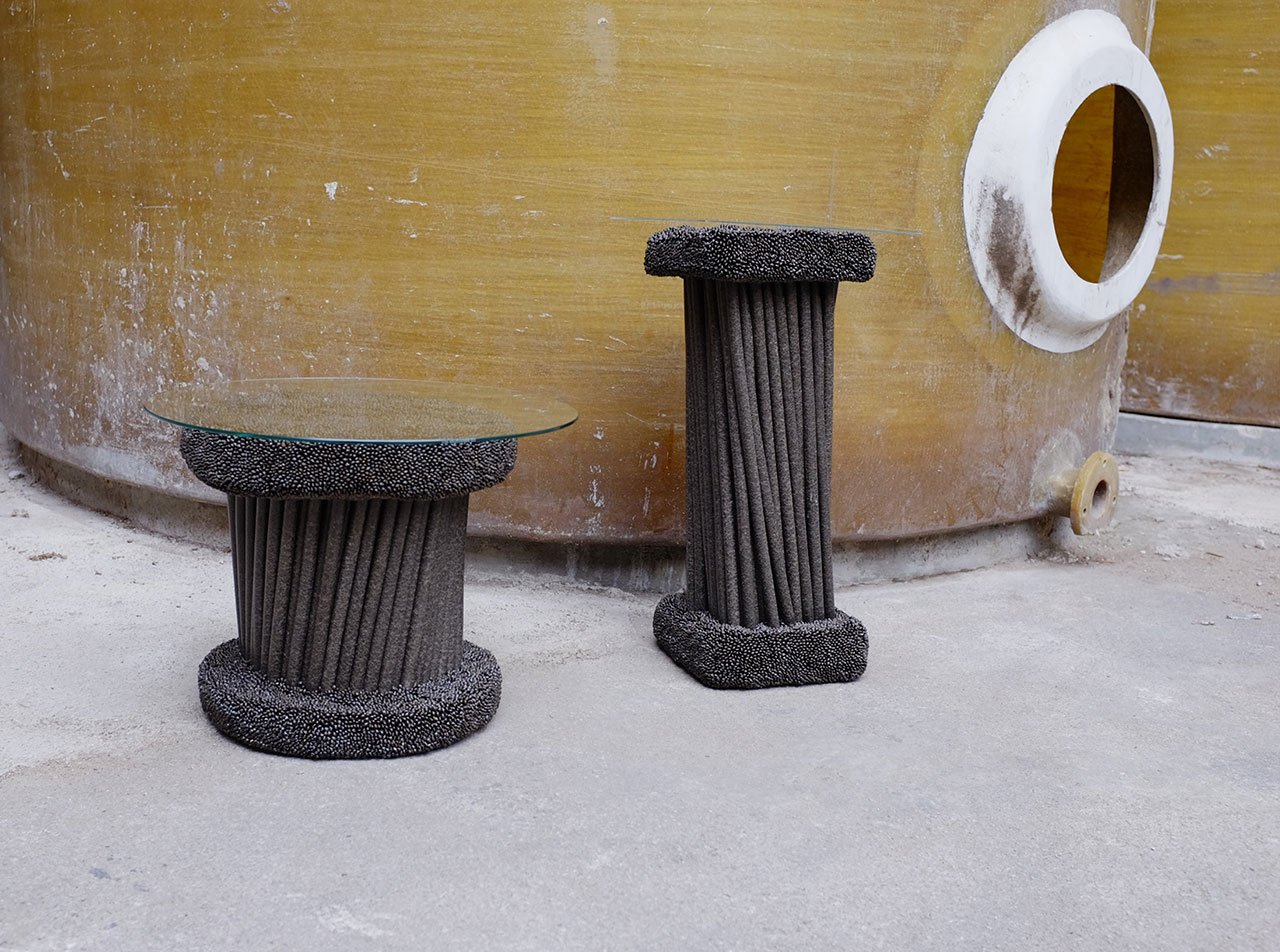
Marlène Huissoud, The Press Cake,
Pressed side tables. Photo © Studio Marlène Huissoud.
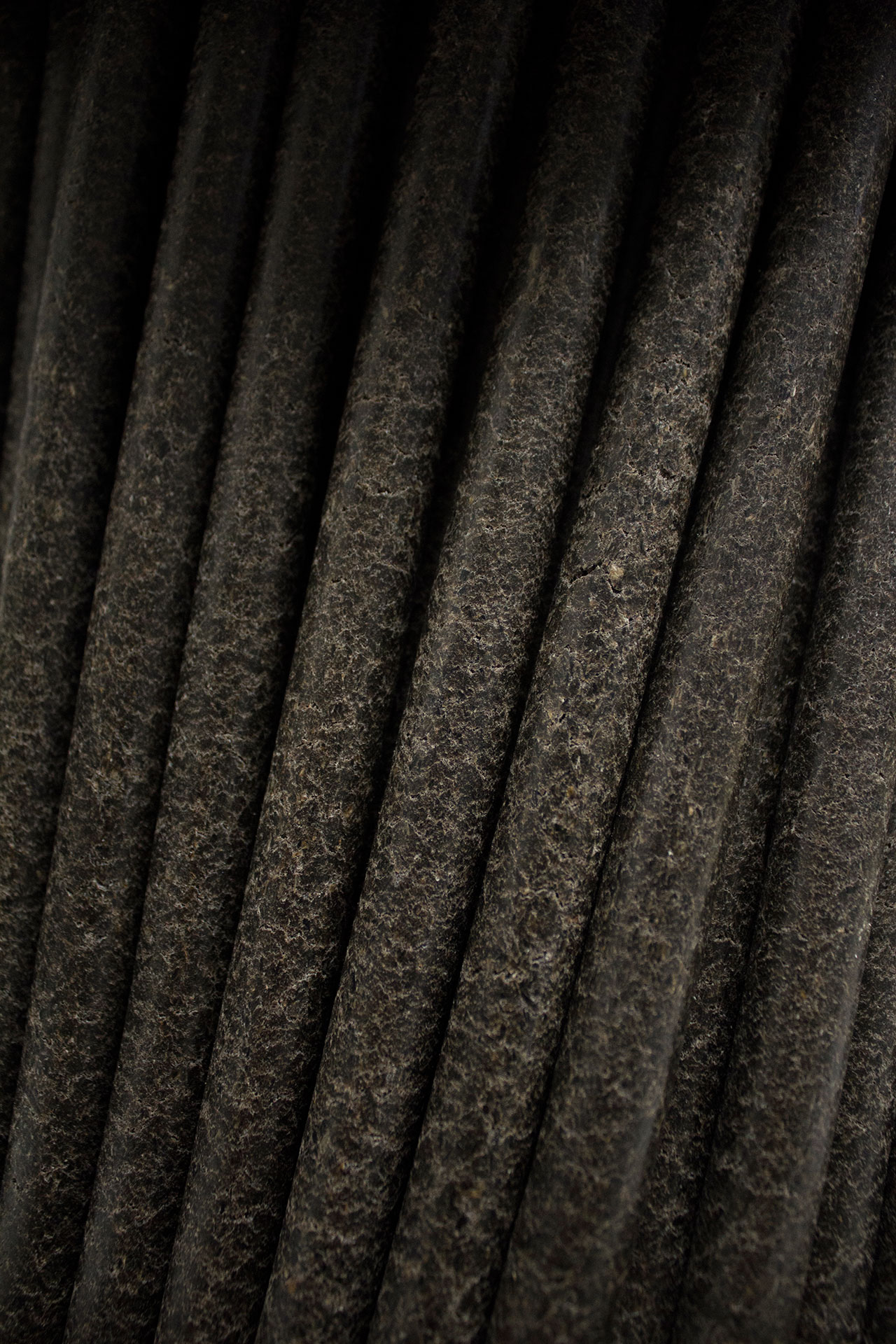
Marlène Huissoud, The Press Cake,
Pressed side table (detail). Photo © Studio Marlène Huissoud.
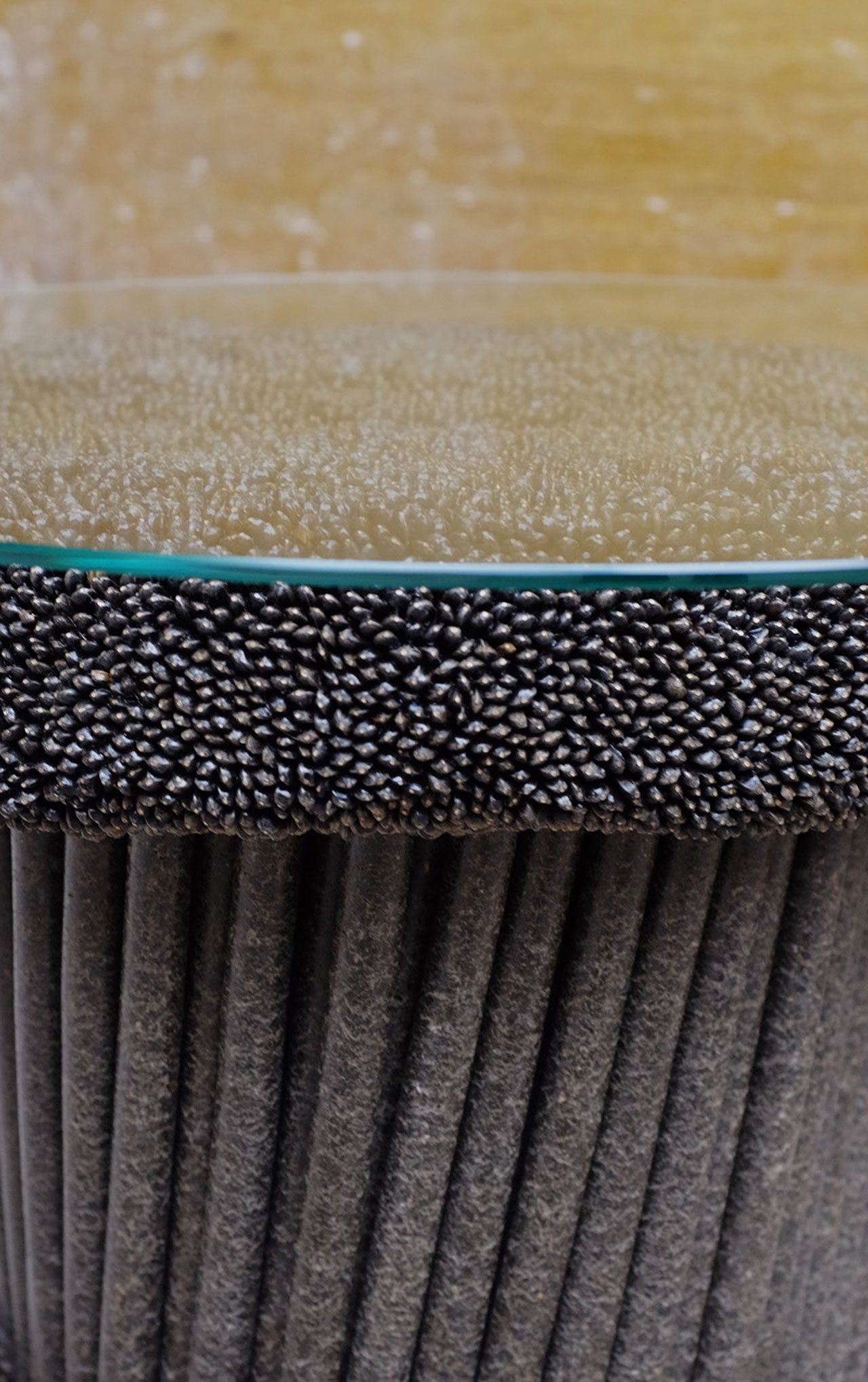
Marlène Huissoud, The Press Cake,
Pressed side table (detail). Photo © Studio Marlène Huissoud.















